Using 9” circular needles cast on the required number of stitches, then join for knitting in the round and place a stitch marker to indicate the start of the round.
Leg
Following your pattern of choice, knit until the leg is the desired length before the heel.

You should now have two sections of stitches on your needles. The live stitches of the heel turn that you have just finished working, and the live stitches of the top of the sock leg that have been ‘resting’ while you have been busy with the heel flap.
Set Up Round: With right side facing and continuing to use the 9” circular needle, pick up and knit the required number of stitches along the side of the heel flap. Slip the marker then continue knitting across the ‘resting’ stitches from the top of the sock that are on the needle. Slip the next marker and then pick up and knit the required number of stitches along other side of the heel flap. Knit across half of the heel turn stitches and place marker. This is the new beginning of the round.
You should now be knitting in the round again on the 9" circulars and be able to follow your knitting pattern instructions for the gusset decreases.
Foot
Knit the foot as per your pattern instructions
You can continue working the toe on the 9” circulars until the sock is too small to fit around the circular needle. You can change to DPNs to finish the last few rows before closing with Kitchener Stitch, however you can use the 9" circulars in a Magic Loop fashion to finish the toe. I usually decrease to about 16 stitches each needle (32 stitches in total) stretching around the needle as I decrease.
Following on from the instructions above:
Set Up for Toe: Remove beginning of the row marker, knit across the sole stitches on the needle then knit to the first marker. Slip the marker and you are now ready to begin the toe decreases with a marker each side of the work again to indicate where the toe decreases should be. Continue to follow the instructions of your chosen pattern for the toe decreases.
If you are struggling with the small size of these needles, here is a little video of me knitting with them. You can see how I use small movements to knit which I think makes using them easier and of course they are also perfect for Continental knitters.
The Sock Ruler® (patent pending), is constructed of a heavy duty, yet flexible plastic; an innovative measuring tool for sock knitters that goes inside of the sock, allowing it to lie flat and ensure accurate measurements (both metric and imperial). Easy to use, no tape measure blues! Made in the USA.

A Message from the Sock Ruler Creator
There has been the occasional misconception that The Sock Ruler® equates to the foot's actual length, which it does not. It was not designed to measure the length of a person's foot, although it is helpful to have that information when you knit a sock. Some people have asked me about knitting for a man who wears a size 14 shoe, for example. That man's foot length is probably 12". The toe decrease would typically begin two inches before the end of the sock. For a 12" foot that toe decrease would start at 10" which is the length of the ruler. After you start the toe decrease you no longer need to use The Sock Ruler®. Please refer to the Shoe Size Conversion Chart should you need help determining the length of the foot of the sock.




